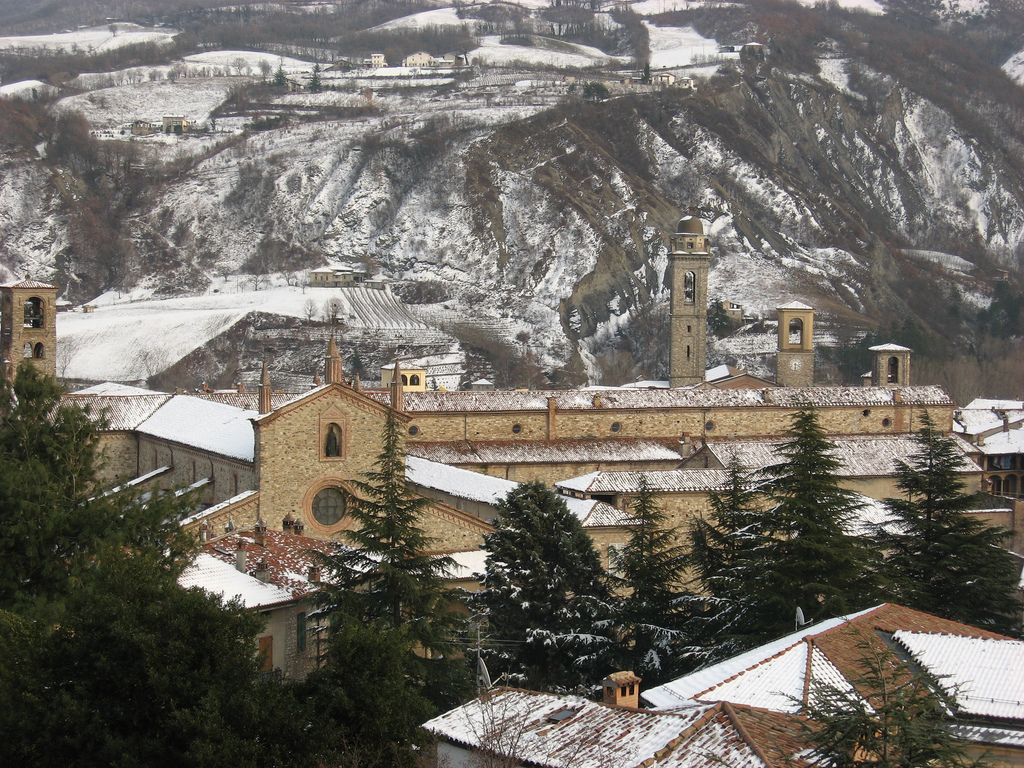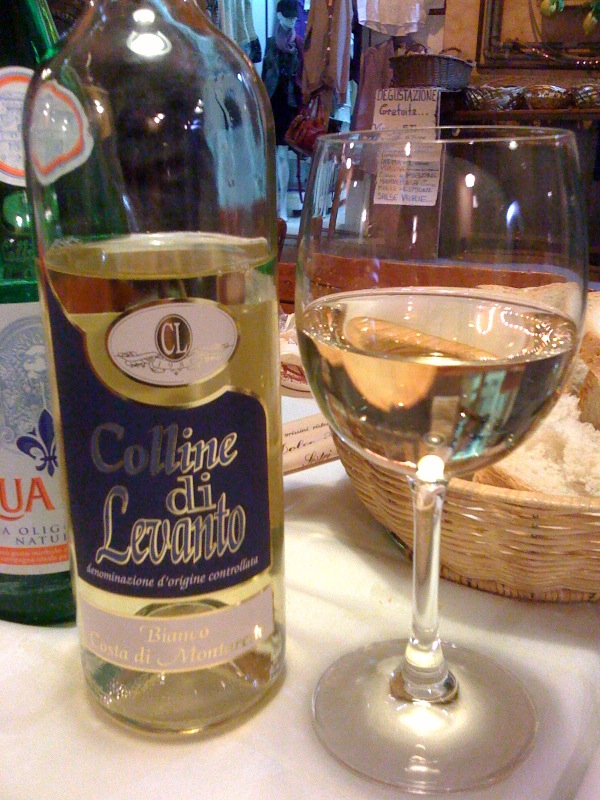|
Mammolo
Mammolo is a red Italian wine grape that is planted primarily in Tuscany. While its use has been diminishing, Mammolo was historically included in the blended Sangiovese-based wines of Chianti where it contributed a distinctive violet or ''mammole'' aroma.J. Robinson ''Jancis Robinson's Wine Course'' Third Edition pg 141 Abbeville Press 2003 In addition to small plantings in the Chianti zone, Mammolo can be found in the Vino Nobile di Montepulciano region of Tuscany and in scattered vineyards throughout Central Italy.J. Robinson (ed) ''"The Oxford Companion to Wine"'' Third Edition pg 424 Oxford University Press 2006 Offspring Mammolo is believed to be a parent vine of the Ligurian/Tuscan vine Pollera neraVitis International Variety Catalogue (VIVC) Pollera nera'' Accessed: August 18th, 2012 and Colombana nera. Synonyms Mammolo is known under a variety of synonyms throughout Central Italy. These include Fegeri, Mammola asciutta, Mammola minuto, Mammoli, Mammolo asciutto, Mam ... [...More Info...] [...Related Items...] OR: [Wikipedia] [Google] [Baidu] |
Colombana Nera
Colombana nera is a red Italian wine grape variety that is grown in Emilia-Romagna and Tuscany. Despite similarities in name, the grape did not get its name from nor is it grown in the San Colombano al Lambro region of Lombardy nor is it permitted in the ''Denominazione di origine controllata'' (DOC) wine of the same name. Rather, ampelographers believe that Colombana nera is named after the Abbey of San Colombano located in the commune of Bobbio in the Piacenza province of Emilia-Romagna where the grape has had a long history of cultivation.J. Robinson, J. Harding and J. Vouillamoz ''Wine Grapes - A complete guide to 1,368 vine varieties, including their origins and flavours'' pg 257 Allen Lane 2012 History Ampelographers believe that first mention of Colombana nera was likely in the posthumous work of the Italian viticulturist Giovan Vettorio Soderini that described a grape known as ''San Colombane'' growing in Tuscany and Emilia-Romagna in 1600. That early synonym and ... [...More Info...] [...Related Items...] OR: [Wikipedia] [Google] [Baidu] |
Vino Nobile Di Montepulciano
Vino Nobile di Montepulciano is a red wine with a Denominazione di Origine Controllata e Garantita status produced in the vineyards surrounding the town of Montepulciano, Italy. The wine is made primarily from the Sangiovese grape varietal (known locally as ''Prugnolo gentile'') (minimum 70%), blended with Canaiolo Nero (10%–20%) and small amounts of other local varieties such as Mammolo. The wine is aged for 2 years (at least 1 year in oak barrels); three years if it is a riserva. The wine should not be confused with Montepulciano d'Abruzzo, a red wine made from the Montepulciano grape in the Abruzzo region of east-central Italy. History In a document dated 789, quoted by Emanuele Repetti in "Dizionario Geografico Fisico Storico della Toscana", the cleric Arnipert offers to the Church of San Silvestro in Lanciniano (Amiata area), farmland and a vineyard located in the Castello di Policiano; another document of 17 October 1350, also mentioned by Repetti, lays down the ... [...More Info...] [...Related Items...] OR: [Wikipedia] [Google] [Baidu] |
Tuscany (wine)
Tuscan wine (Italian ''Toscana'') is Italian wine from the Tuscany region. Located in central Italy along the Tyrrhenian coast, Tuscany is home to some of the world's most notable wine regions. Chianti, Brunello di Montalcino and Vino Nobile di Montepulciano are primarily made with Sangiovese grape whereas the Vernaccia grape is the basis of the white Vernaccia di San Gimignano. Tuscany is also known for the dessert wine Vin Santo, made from a variety of the region's grapes. Tuscany has forty-one '' Denominazioni di origine controllata'' (DOC) and eleven '' Denominazioni di Origine Controllata e Garantita'' (DOCG). In the 1970s a new class of wines known in the trade as "Super Tuscans" emerged. These wines were made outside DOC/DOCG regulations but were considered of high quality and commanded high prices. Many of these wines became cult wines. In the reformation of the Italian classification system many of the original Super Tuscans now qualify as DOC or DOCG wines (such as th ... [...More Info...] [...Related Items...] OR: [Wikipedia] [Google] [Baidu] |
Sciacarello
Sciacarello (or ''Sciaccarello'', ''Sciaccarellu'') is a red Italian wine grape variety that is grown primarily in Corsica. It is most noted for the wines that come from Ajaccio which tend to be highly perfumed. It is also associated with wines from Calvi, and in the Sartène region around Propriano. The grape is normally blended and rarely made into a varietal wine.J. Robinson ''Vines, Grapes & Wines'' pg 208 Mitchell Beazley 1986 Sciacarello is believed to be a parent vine of the Ligurian- Tuscan wine grape, pollera nera.Vitis International Variety Catalogue (VIVC) Pollera Nera'' Accessed: August 18th, 2012 Di Vecchi Staraz, Bandinelli, Boselli, This, Boursiquot, Laucou, Lacombe, and Varès (2007) showed that Sciaccarello (or Sciaccarellu as it is known in Corsica) and another Corsican variety Malvasia Montanaccio as well as Tuscan varieties Biancone, Caloria, Colombana Nera, and Pollera Nera have genetic ties to Mammolo Mammolo is a red Italian wine grape that is planted p ... [...More Info...] [...Related Items...] OR: [Wikipedia] [Google] [Baidu] |
Sangiovese
Sangiovese (, also , , ) is a red Italian wine grape variety that derives its name from the Latin ''sanguis Jovis'', "the blood of Jupiter". Though it is the grape of most of central Italy from Romagna down to Lazio (the most widespread grape in Tuscany), Campania and Sicily, outside Italy it is most famous as the only component of Brunello di Montalcino and Rosso di Montalcino and the main component of the blends Chianti, Carmignano, Vino Nobile di Montepulciano and Morellino di Scansano, although it can also be used to make varietal wines such as Sangiovese di Romagna and the modern " Super Tuscan" wines like Tignanello. Sangiovese was already well known by the 16th century. Recent DNA profiling by José Vouillamoz of the Istituto Agrario di San Michele all’Adige suggests that Sangiovese's ancestors are Ciliegiolo and Calabrese Montenuovo. The former is well known as an ancient variety in Tuscany, the latter is an almost-extinct relic from Calabria, the toe of It ... [...More Info...] [...Related Items...] OR: [Wikipedia] [Google] [Baidu] |
Pollera Nera
Pollera nera is a red Italian wine grape variety that is grown primarily in the Liguria wine region and northwest Tuscany. Ampelographers believe that the vine has a very long winemaking history but it is rarely seen today.J. Robinson ''Jancis Robinson's Guide to Wine Grapes'' pg 148 Oxford University Press 1996 It is believed to have been descended from the Chianti wine grape Mammolo and the Corsican wine grape SciacarelloVitis International Variety Catalogue (VIVC) Pollera Nera'' Accessed: August 18th, 2012 which would make it a half-sibling of Colombana nera.J. Robinson, J. Harding and J. Vouillamoz ''Wine Grapes - A complete guide to 1,368 vine varieties, including their origins and flavours'' pg 257 Allen Lane 2012 DOC wines Pollera nera is a permitted variety in the '' Denominazione di origine controllata'' (DOC) wines of Colli di Luni that spans across the border between Liguria and Tuscany. Here the red wines are primarily Sangiovese (60-70%) with Pollera nera, Canaio ... [...More Info...] [...Related Items...] OR: [Wikipedia] [Google] [Baidu] |
Chianti
A Chianti wine (, also , ) is any wine produced in the Chianti region of central Tuscany. It was historically associated with a squat bottle enclosed in a straw basket, called a ''fiasco'' ("flask"; ''pl. fiaschi''). However, the ''fiasco'' is only used by a few makers of the wine as most Chianti is now bottled in more standard shaped wine bottles. In the mid-late 19th century, Baron Bettino Ricasoli (later Prime Minister of the Kingdom of Italy) helped establish Sangiovese as the blend's dominant grape variety, creating the blueprint for today's Chianti wines. The first definition of a wine area called ''Chianti'' was made in 1716. It described the area near the villages of Gaiole, Castellina and Radda; the so-called ''Lega del Chianti'' and later ''Provincia del Chianti'' (Chianti province). In 1932 the Chianti area was completely redrawn and divided into seven sub-areas: Classico, Colli Aretini, Colli Fiorentini, Colline Pisane, Colli Senesi, Montalbano and Rùfina. Most ... [...More Info...] [...Related Items...] OR: [Wikipedia] [Google] [Baidu] |
History Of Chianti
The history of Chianti dates back to at least the 13th century with the earliest incarnations of Chianti as a white wine. Today this Tuscan wine is one of Italy's most well known and recognizable wines. In the Middle Ages, the villages of Gaiole, Castellina and Radda located near Florence formed as a ''Lega del Chianti'' (League of Chianti) creating an area that would become the spiritual and historical "heart" of the Chianti region and today is located within the Chianti Classico ''Denominazione di Origine Controllata e Garantita'' (DOCG). As the wines of Chianti grew in popularity other villages in Tuscany wanted their lands to be called Chianti. The boundaries of the region have seen many expansions and sub-divisions over the centuries. The variable ''terroir'' of these different macroclimates contributed to diverging range of quality on the market and by the late 20th century consumer perception of Chianti was often associated with basic mass-market Chianti sold in a squa ... [...More Info...] [...Related Items...] OR: [Wikipedia] [Google] [Baidu] |
Grape (wine)
This list of grape varieties includes cultivated grapes, whether used for wine, or eating as a table grape, fresh or dried (raisin, currant, sultana). For a complete list of all grape species including those unimportant to agriculture, see Vitis. The term ''grape variety'' refers to cultivars rather than actual botanical varieties according to the International Code of Nomenclature for Cultivated Plants, because they are propagated by cuttings and may have unstable reproductive properties. However, the term ''variety'' has become so entrenched in viticulture that any change to using the term ''cultivar'' instead is unlikely. Single species grapes While some of the grapes in this list are hybrids, they are hybridized within a single species. For those grapes hybridized across species, known as interspecific hybrids, see the section on multispecies hybrid grapes below. ''Vitis vinifera'' (wine) Red grapes White grapes Rose Grapes ''Vitis vinifera'' (table) ... [...More Info...] [...Related Items...] OR: [Wikipedia] [Google] [Baidu] |
Synonyms
A synonym is a word, morpheme, or phrase that means exactly or nearly the same as another word, morpheme, or phrase in a given language. For example, in the English language, the words ''begin'', ''start'', ''commence'', and ''initiate'' are all synonyms of one another: they are ''synonymous''. The standard test for synonymy is substitution: one form can be replaced by another in a sentence without changing its meaning. Words are considered synonymous in only one particular sense: for example, ''long'' and ''extended'' in the context ''long time'' or ''extended time'' are synonymous, but ''long'' cannot be used in the phrase ''extended family''. Synonyms with exactly the same meaning share a seme or denotational sememe, whereas those with inexactly similar meanings share a broader denotational or connotational sememe and thus overlap within a semantic field. The former are sometimes called cognitive synonyms and the latter, near-synonyms, plesionyms or poecilonyms. Lexico ... [...More Info...] [...Related Items...] OR: [Wikipedia] [Google] [Baidu] |
Viola (plant)
''Viola'' is a genus of flowering plants in the violet family Violaceae. It is the largest genus in the family, containing between 525 and 600 species. Most species are found in the temperate Northern Hemisphere; however, some are also found in widely divergent areas such as Hawaii, Australasia, and the Andes. Some ''Viola'' species are perennial plants, some are annual plants, and a few are small shrubs. Many species, varieties and cultivars are grown in gardens for their ornamental flowers. In horticulture the term pansy is normally used for those multi-colored, large-flowered cultivars which are raised annually or biennially from seed and used extensively in bedding. The terms viola and violet are normally reserved for small-flowered annuals or perennials, including the wild species. Description Annual or perennial caulescent or acaulescent (with or without a visible plant stem above the ground) herbs, shrubs or very rarely treelets. In acaulescent taxa the foliage and f ... [...More Info...] [...Related Items...] OR: [Wikipedia] [Google] [Baidu] |
Ligurian (wine)
Liguria is an Italian wine region located in the northwest region of Italy along the Italian Riviera. It is bordered by the Piedmont wine region to the north, the Alps and French wine region of Provence to the west, the Apennine Mountains and the Emilia-Romagna wine region to the east with a small border shared with Tuscany in the south-east along the Ligurian sea.M. Ewing-Mulligan & E. McCarthy ''Italian Wines for Dummies'' pg 83-87 Hungry Minds 2001 Liguria has several ''Denominazione di origine controllata'' regions with the most notable being the Cinque Terre DOC from cliff side vineyards situated among the five fishing villages of Cinque Terre in the province of La Spezia. The DOC produces light white wines made from grape varieties such as Bosco, Albarola and Vermentino. In the west is the red wine-producing region of Dolceacqua, producing wine from the indigenous Rossese grape.P. Saunders ''Wine Label Language'' pp. 139–209 Firefly Books 2004 DOC regions The follo ... [...More Info...] [...Related Items...] OR: [Wikipedia] [Google] [Baidu] |









